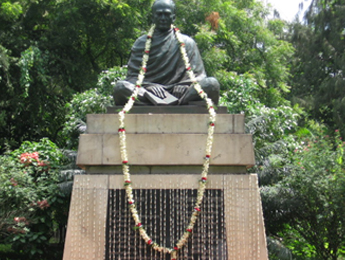Vidyasagar Is Not History Vidyasagar Is a Living Force

Iswar Chandra Bandopadhaya, known by his title ‘Vidyasagar’, had been considered as one of the pillars of Bengal renaissance. The work he began more than a century and a half ago in instilling selfconfidencein women and giving them a sense of freedom has been bequeathed to us. Raja
Rammohan Roy was pioneer of the Bengal renaissance movement, Derozio had added colour to it, but it was Iswarchandra who had given a shape and direction.
Such a respected and beloved son of Bengal was born at a village ‘Birsingha’ of district Midnapur in West Bengal on September 26, 1820. The village Birsingha during that time was under the jurisdiction of the district Hooghly of undivided Bengal. He was born in a poor orthodox Brahmin family. Thakurdas Bandopadhaya and Bhagabati Devi were his parent.
Vidyasagar was very intelligent in his childhood. He learnt English numeric while he was travelling on foot to the Kolkata with his father by observing the milestones beside the road. At nine he came to Kolkata and studied at the Sanskrit College. He later became its Principal. He opened the doors of Sanskrit College to lower caste students (previously it was exclusive to the Brahmins). Even when he was a student at Sanskrit College, he would spend part of his scholarship proceeds to buy medicine for the sick and also supply cooked mishtanno (rice pudding) to feed the poor. Vidyasagar did not believe that his responsibility to the suffering humanity ended with his financial donation. He was a greatest architect of education and symbol for love and kindness and above all a staunch follower of humanity.
Vidyasagar brought a revolution in the education system of Bengal. On 1850 his wrote “Barno-Porichoy” (Introduction to the Bengali script / letter) and refined the Bengali language and made it accessible to the common strata of the society.
Vidyasagar worked for the upliftment of women, widow remarriage, and women’s education. He fought against child marriage and polygamy too. He published two separate volumes on remarriage of widows and another two volumes on polygamy citing quotes from scriptures and explaining the validity of his arguments. He was virulently attacked by the feudal conservative vested society for his stand. But nothing stopped Vidyasagar from what he set out to do! His iron-will prevailed in the end.
Vidyasagar believed that the status of women and all kinds of injustice and inequalities that they face could be changed only through education. He founded 35 schools for girls’ education and maintained those schools by his own resources.
He mostly devoted his time writing reformist literature and text books. His pioneering work in Bengali prose certainly deserves the very best of appreciation. Even Rabindranath Tagore revered him as ‘the father of modern Bengali prose’.
At the fag end of his life Vidyasagar worked among the tribal community and in the year 1891 on 29th July, he left the world. We shall have to invoke him in every moment and we cannot afford to put Vidyasagar on a museum pedestal and court oblivion.
